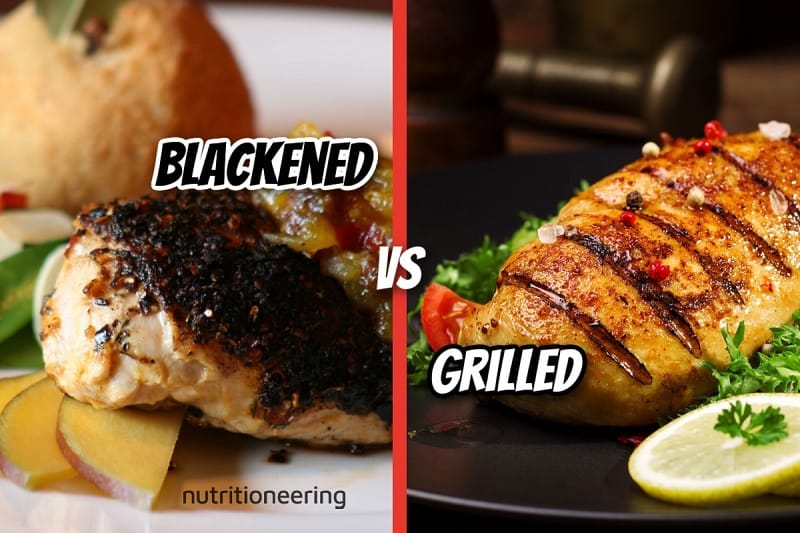Blackening and grilling stand out for their unique flavors and textures regarding cooking methods that bring out the best in meats and vegetables. Both techniques can transform simple ingredients into delicious meals, but they each have their characteristics, benefits, and optimal uses.
In this article, we’ll delve into the differences between these foods, explore the history behind these methods, and learn some facts highlighting the importance of choosing the right technique for your culinary creations.
The Basics of Blackening
Blackening is a cooking technique that originated in Cajun cuisine, a cooking style developed by the Acadian settlers in the Louisiana region of the United States. It involves coating the food, typically fish or chicken, in a mixture of spices before cooking it in a very hot pan, usually cast iron.
The spices often include a robust blend of paprika, cayenne pepper, garlic powder, onion powder, salt, and black pepper, creating a flavorful crust that’s dark, almost black—hence the name. The high heat chars the surface of the food, sealing in juices and imparting a smoky, spicy flavor that’s characteristic of Cajun cooking.
The Art of Grilling
Source: https://www.bodybuildingmealplan.com/
Grilling, on the other hand, is a cooking method involving direct heat. Foods are cooked on a grill grate over a charcoal, wood, or gas heat source. Grilling is revered for imparting a distinct smoky flavor to foods, thanks to the smoke that arises when the fat and juices drip onto the heat source.
Unlike blackening, grilling is not typically associated with a specific cuisine but is a universal technique. It’s ideal for many foods, including meats, fish, vegetables, and fruits. The grill marks, created by the hot grate, not only add a visual appeal but also contribute to the flavor profile of the items.
Health Considerations
When comparing the health aspects of blackened and grilled foods, it’s essential to consider the potential for creating harmful compounds. Grilling at high temperatures can lead to the formation of polycyclic aromatic hydrocarbons (PAHs) and heterocyclic amines (HCAs), which have been linked to increased cancer risk. However, marinating foods before grilling can significantly reduce the formation of these compounds.
Blackening, due to its cooking method, may also produce some of these harmful substances but in potentially lower amounts due to the protective layer of spices that can reduce direct exposure of the meat to extremely high temperatures.
Flavor and Preference
The choice between blackened and grilled often comes down to flavor preferences and the type of cuisine being prepared. Blackening offers a bold, spicy taste synonymous with Cajun and Creole dishes. It creates a spicy crust that’s hard to replicate with other cooking methods.
Grilling, with its smoky flavor, is more versatile and can be adapted to many different culinary traditions. It offers a lighter taste profile that can be enhanced with rubs, marinades, and sauces.
Conclusion
Both blackening and grilling are cherished cooking techniques that have their place in the culinary world. Blackening brings a bold, spicy kick to dishes that are ideal for those who enjoy intense flavors. At the same time, grilling provides a universal approach to cooking that can be tailored to a wide range of dietary preferences.
Understanding the nuances of each method allows chefs and home cooks alike to select the best technique for their ingredients, ensuring a delicious outcome every time. Whether you’re in the mood for the fiery flavors of Cajun cuisine or the smoky essence of grilled dishes, mastering these methods can elevate your cooking to new heights.

Welcome to the captivating world of Tusks Bar and Grill, an East African Fusion restaurant nestled in the heart of Calgary, Canada. Tusks Bar and Grill is a culinary gem that brings together the vibrant flavors and rich culinary traditions of East Africa, creating a truly unique and unforgettable dining experience.
